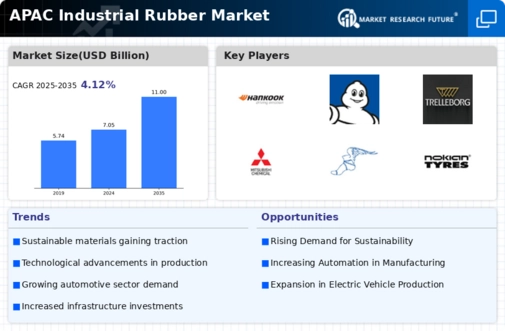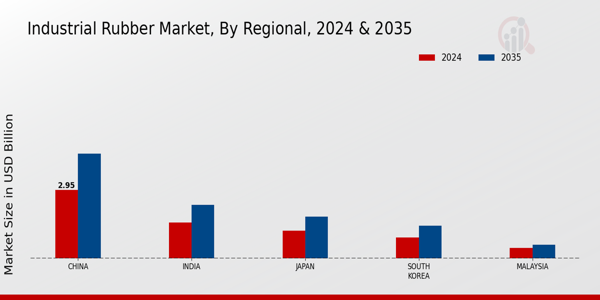The is a dynamic and rapidly evolving sector that plays a crucial role in various industries such as automotive, construction, and manufacturing. This market is characterized by a diverse range of players, each vying for market share through innovation, production efficiency, and strategic partnerships. The competitive landscape is marked by regional players and international corporations, with companies continuously researching and developing new compounds and technologies to enhance the performance and sustainability of rubber products.
As demand for industrial rubber continues to grow in APAC, driven by increasing industrialization and urbanization, the market is expected to witness significant advancements in production processes and the introduction of eco-friendly alternatives, thereby intensifying competition among existing firms.Hankook Tire has established itself as a formidable force within the , leveraging its strong brand reputation and commitment to innovation. The company is known for its high-performance tires, which cater to various sectors including passenger vehicles, trucks, and motorcycles. Hankook Tire’s manufacturing facilities in the region enable it to respond swiftly to market demands while maintaining quality standards.
The company’s robust research and development efforts focus on sustainability and advanced rubber technology, allowing it to stay competitive against local and international rivals. Moreover, Hankook Tire's strategic collaborations and sponsorships in motorsports further enhance its visibility and brand image, contributing to its sustained growth in the sector.Michelin, a leader in the , presents a compelling overview of the sector's competitive dynamics. With a comprehensive range of products that includes passenger and commercial vehicle tires, as well as specialty rubber products, Michelin maintains a strong foothold in the APAC region.
The company’s emphasis on innovation is evident in its continuous development of cutting-edge tire technologies aimed at improving efficiency and reducing environmental impact. Michelin places significant importance on its presence in emerging markets within APAC, capitalizing on regional growth trends through strategic mergers and acquisitions, allowing it to expand its manufacturing capabilities and product offerings. Its commitment to sustainability and customer satisfaction further strengthens its market position, ensuring that it remains a prominent player within the rapidly changing landscape of industrial rubber in the region.





















